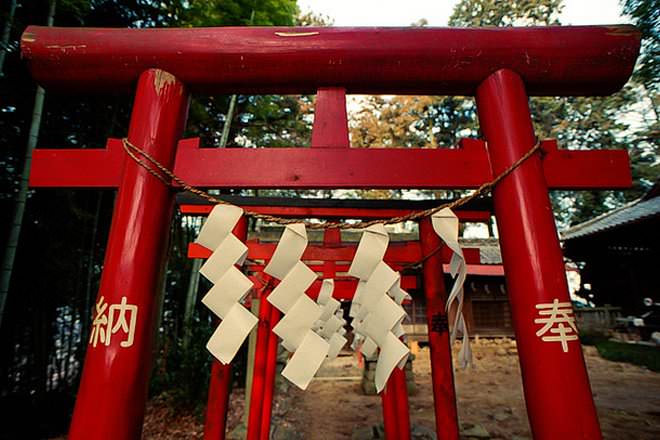| Place of origin | Japan |
China |
|---|
| Practices | Visit to shrines to pay homage to Shinto deities; Shamanism, etc. |
Philosophical maturity, virtuous conduct, internal alchemy, and some sexual practices. |
|---|
| Use of statues and pictures | Permitted. |
They can be used as meditation objects, but they are not that common. |
|---|
| Life after death | Yomi |
If immortality isn't attained during life, the Tao will continue to evolve and manifest in different forms, in accordance with the entity's general conduct during a state of existence. This applies to all sentient and insentient beings. |
|---|
| Belief of God | Numerous deities. |
Tao literally means the Way, which indicates the movement of a dynamic existence that is composed of opposing forces. Taoists do not believe in a personal God. |
|---|
| Clergy | Priests, miko, etc. |
Taoist clergies are led by the daoshis, masters of the Tao, and followed by daojiaotus, followers of Taoism who also support the clergy, although it is not common. |
|---|
| Scriptures | Kojiki, Nihon Shoki |
Daozang, a collection of 1400 texts organized in 3 sections which includes the Tao Te Ching, Zhuang Zi, I Ching, and some others. |
|---|
| Literal Meaning | The Way of the gods. |
To follow the Tao. |
|---|
| Concept of Deity | Numerous deities. The sun is one of the most important ones(they believe that the sun is a goddess). |
Being manifestations of the Tao, Gods are seen as higher life forms. |
|---|
| Founder | No founder. |
Lao Tzu |
|---|
| Place of worship | Shrines. |
Taoist monasteries, temples, shrines. |
|---|
| Status of women | Women may become priestesses. But are still seen as less than men |
No distinctions between men and women, as both are seen as manifestations of the Tao. |
|---|
| Geographical distribution and predominance | Shinto has influenced Japan for several millenia, with the height appearing before World War 2 |
China, Korea, to lesser extent Vietnam and Japan. |
|---|
| View of the Buddha | Buddha is followed by many Shintoists. |
Some Taoists argue that the Buddha was a student of Lao Tzu, although there is no concrete evidence for it. Most Taoists respect and follow the Buddha's teachings. |
|---|
| Goal of religion | To serve the Shinto deities, or Kami, as they are known. |
To be one with the Tao. |
|---|
| Original Language(s) | Japanese |
Old Chinese |
|---|
| Concept of God | Numerous deities. |
Numerous deities. |
|---|
| Followers | Shintoists. |
Taoists |
|---|
| View of Oriental religions | Although Shinto became organized, in order to prevent being overtaken by Buddhism or any other religion, it sees no contradiction in belonging to any other religion. |
Taoists usually follow other Oriental religions too. |
|---|
| Original Languages | Japanese. |
Mandarin or Cantonese |
|---|
| Principle | The essence of Shinto is the Japanese devotion to invisible spiritual beings and powers called kami, to shrines, and to various rituals. |
The Tao is the only principle. The rest are its manifestations. |
|---|
| Means of salvation | By serving the Kami. |
Following the Tao. |
|---|
| Marriage | Between one man and one woman. |
A social bonding, applicable with clerics as well. |
|---|
| Confessing sins | Shinto has harae (purifying rites), which can be performed with water, salt, or a stick with paper dangling from its end. |
Sin is not a Taoist concept. |
|---|
| Religious Law | N/A |
The Tao. |
|---|
| Holy days/Official Holidays | The Japanese national holidays, as well as local shrine festivals (matsuri). |
Chinese New Year, 3 Day Festival of the Dead, Ancestor Day. |
|---|
| Symbols | The Torii gate reliligous symbol, mark the entrance to sacred space. Representing the transition between the finite world and the infinite world of the gods. |
The Yin and Yang. |
|---|
| Time of origin | Approx. 700 B.C. |
Approx. 550 B.C.E (Before Common Era) |
|---|
| Offshoot religions | Tenrikyo, other Japanese sects. |
Confucianism. |
|---|
| Can atheists partake in this religion's practices? | No. |
Yes. |
|---|
| Views on other religions | Shintoists usually follow Buddhism or another religion too. |
Taoism teaches that all religions are as anything else; manifestations of the impersonal Tao. |
|---|
| Use of statues, images | Permitted. |
Permitted. |
|---|
| Population | From 4 Million to 110 Million, debated. Most people that practice Shinto also practice Buddhism. |
30-40 million. |
|---|


Comments: Shinto vs Taoism